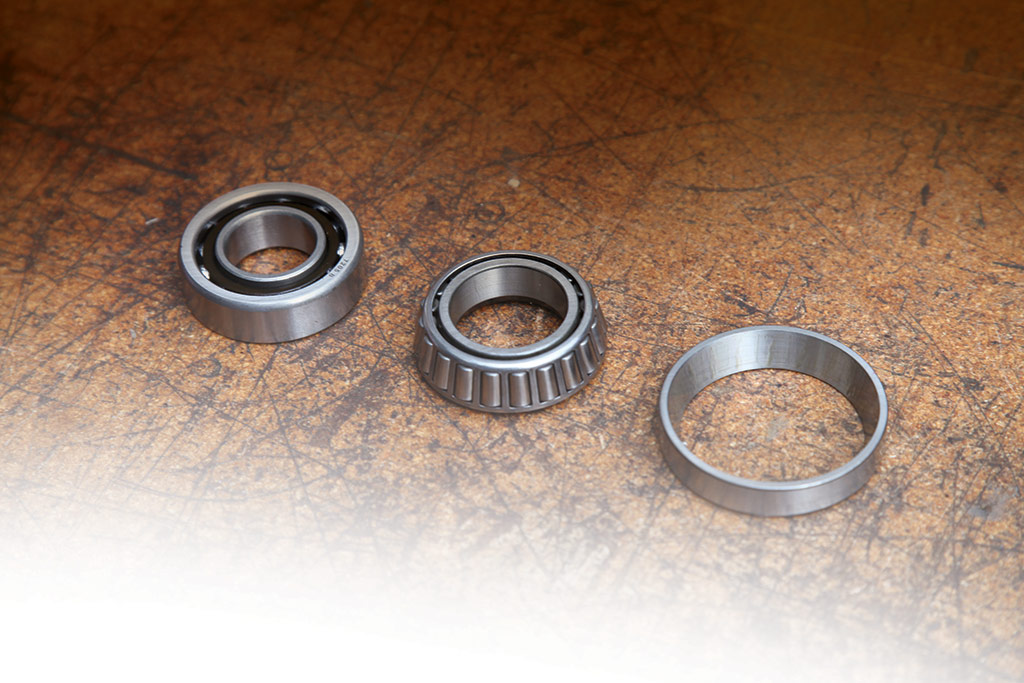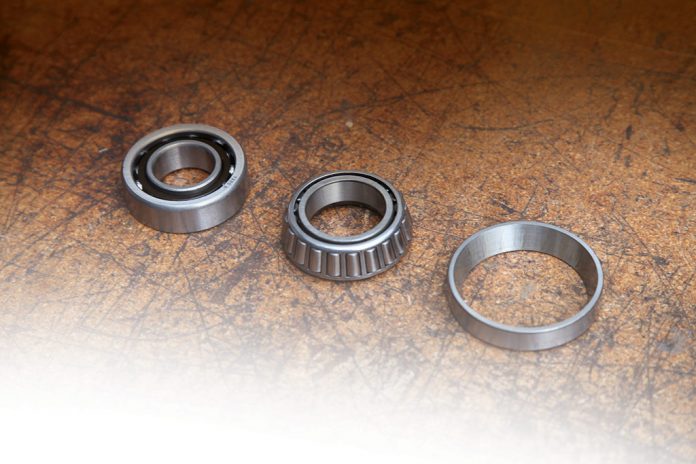By Dan Watson

In previous Lube Talk articles, we looked at the role lubricants play in overcoming the effects of friction. In this installment, I want to examine one specialized type of lubricant: grease lube. Looking at previous civilizations, we can see that man has tried several methods to provide basic lubrication to load-bearing surfaces; axles have presented one of the most challenging applications. As far back as 1400 BC, mutton fat and beef tallow were used on chariot axles to reduce friction in order to allow for more speed and to slow down wear. One can only imagine the pressure on the maintenance men to make the chariot go faster and to avoid axles catching on fire from the continuous friction. While there is evidence of lime being added to these fats in order to make their lubricating properties last longer, few other improvements to the composition of grease are known to have been used until we reach the magic year of 1859.
What happened in 1859? Colonel Drake drilled the first ever oil well in Pennsylvania; since then, the world has not been the same. In petroleum oil, man found a lubricant that could be manipulated in a variety of ways to produce greases much superior to the lubricants that preceded them. In turn, more advanced and effective greases have been produced in recent decades with the advent of synthetic greases.
The word grease is derived from the Latin word Crassus meaning fat. We can see where the name came from (mutton fat, beef tallow); however, grease lube, for modern purposes, is not to be construed as fat. The American Society for Testing Materials (ASTM) defined grease in 1916 as: A solid to semi-fluid product of dispersion of a thickening agent in a liquid lubricant. In plain English, this means a lubricant composed of lubricating fluids (oils), thickened by mixing chemicals to produce a semi-fluid to semi-solid consistency.
Now that we know a little of the history of grease and how grease is defined in modern lubrication; when, where and why is grease lube used? While lubricating oils are able to lubricate any friction-causing situation, greases offer unique characteristics that are well suited for:
- Situations requiring less dripping or spattering of lubricant
- Hard to lubricate bearings or joints where reducing frequency of lubrication is needed
- In dirty, dusty or hazardous environments where additional sealing is needed to prevent lubricant contamination
- For intermittent operation. Oil drains away from critical bearings when the equipment is stopped but grease stays in place.
Grease Lube Composition
Greases are made from oil and thickeners (sometimes called soaps). The process is simple, but the details are fairly complex. The lubricating oil can be petroleum or synthetic and can vary in viscosity. Additionally, anti-wear and extreme pressure additives can be added to formulate greases for specific applications, such as high speed bearings, very cold or very hot conditions, open gears, extreme loads or high moisture conditions, to name a few. Oil and thickeners can be combined to offer greater temperature ranges and resistance to moisture. Thickeners can be combined or formulated with additional chemicals to produce more complex thickeners for specific applications.
Greases will vary in thickness depending on the amount and type of thickeners used, as well as the viscosity of the lubricating oil used. The National Lubricating Grease Institute (NLGI) is the regulating body that establishes specific ratings for greases. Greases are rated on a hardness scale from 000 to 6; where 000 is a thick liquid, like pudding, and 6 is a block, similar to hard clay. Today, 000 grease lube is used as a replacement for gear lubes in bearings and differentials, and number 6 grease is used where a rubbing action is needed to produce a light film on the surface to be lubricated. Wheel bearings and chassis greases used in auto and truck applications are usually NLGI #2. In very cold climates, NLGI #1 grease is preferred because the grease will thicken in response to the temperatures. Synthetic greases thickened with appropriate compounds are functional over a wide temperature range, from minus 50ºF to 500ºF; petroleum greases are generally limited to 0°F to 300°F.
In 1991, the NLGI developed a classification system specifically targeting automotive greases (Table One). For the majority of readers, it is the appropriate rating system for your truck applications.
| Application | NLGI Service Classification |
Service Limitations |
| Chassis |
LA |
Mild duty, frequent re-lubrication |
| Chassis |
LB |
Infrequent re-lubrication, high loads, water exposure |
| Wheel Bearings |
GA |
Mild duty |
| Wheel Bearings |
GB |
Moderate duty, typical of most vehicles |
| Wheel Bearings |
GC |
Severe duty, high temperatures, frequent stop and go service |
So, when you are looking to purchase grease lube for your truck, look for grease labeled GC-LB: grease rated for severe duty for the wheel bearings as well as for the chassis. Multi-purpose grease is the correct match for 3500 chassis, but heavy duty grease is the better choice for most tow trucks. Synthetic greases, available from Amsoil and Mobil, will provide the best protection over the widest temperature range. Heavy duty grease is moly-fortified (molybdenum disulfide), which provides for extreme pressure lubrication. I have explained the difference in extreme pressure lubrication vs. standard lubrication regimes in an earlier issue of Lube Talk, so please refer to that issue for the specific explanation. There are several legitimate extreme pressure grease points on heavy duty trucks; using the correct grease is critical for proper operation and long life.
If the grease will be exposed to water, either by submersion or by spray, using water resistant grease is the best choice. To be water resistant, the grease must pass additional testing that insures its ability to cling to a surface while being sprayed with a stream of water. Water resistant greases contain additional thickeners and tackifiers that allow them to resist washing out. Sometimes, these greases will be labeled “marine,” but more and more they are simply referred to as water resistant.
Grease Compatibility
A word of caution; not all greases are compatible with each other. This problem occurs because some of the thickening agents chemically react with others, which can lead to the grease lube becoming very hard or liquefying or preventing the oil from leeching out to provide lubrication, essentially rendering the grease useless. Most grease you find for automotive applications are lithium or lithium-complex greases: these are compatible with each other. Table Two covers compatibility/incompatibility of commonly used greases. If you find grease that uses a different thickener than those listed, contact me to verify compatibility.
Compatibility / Incompatibility of Commonly Used greases (Table Two)

Grease is the forgotten lubricant, it just doesn’t rise to the level of notice of other lubricants; however, grease lube is fundamental to proper care for your vehicle. For most auto or truck applications, greasing should be done at three month intervals for petroleum and six month intervals for synthetics. Wheel bearings properly packed with synthetic grease are good for 10 years, but the most convenient time for repacking is when the brakes are replaced. There are few manufacturers stipulating wheel bearing maintenance, and some are now installing sealed bearings that cannot be greased. Ball joints and steering joints can still be greased in most heavy duty vehicles, but in light duty vehicles, the grease fittings may not be installed and you will have to purchase them and install them. As with all lubricants, synthetic greases outperform petroleum greases, and the cost difference is actually in favor of the synthetics; you simply use less grease over time and the upfront cost difference is minimal.
For questions and/or comments, contact me via my website, www.TheLubepage.com, or by email at danwatson@thelubepage.com.






